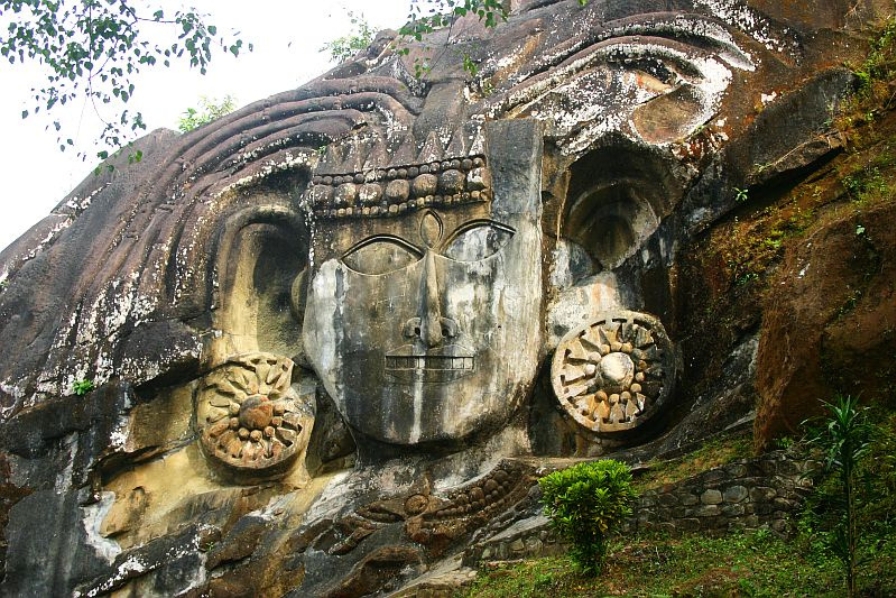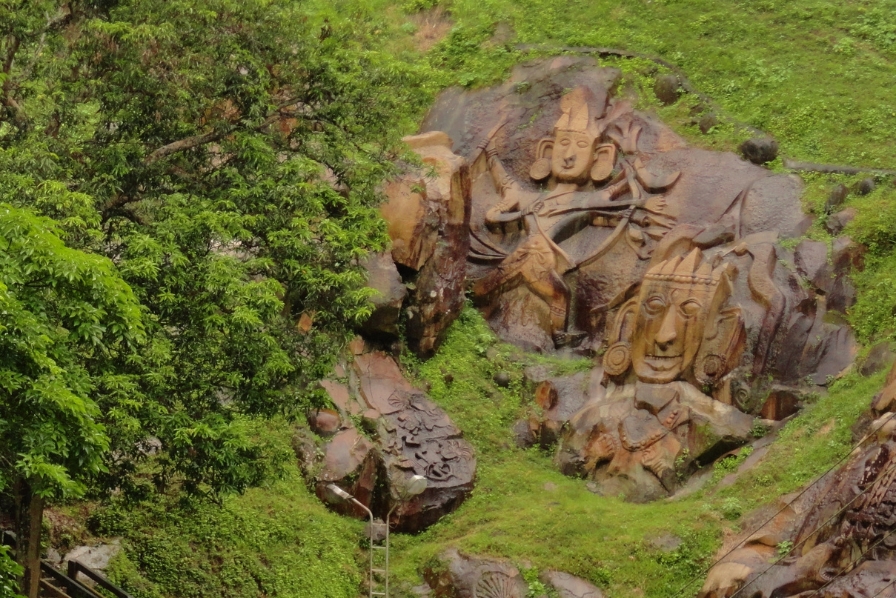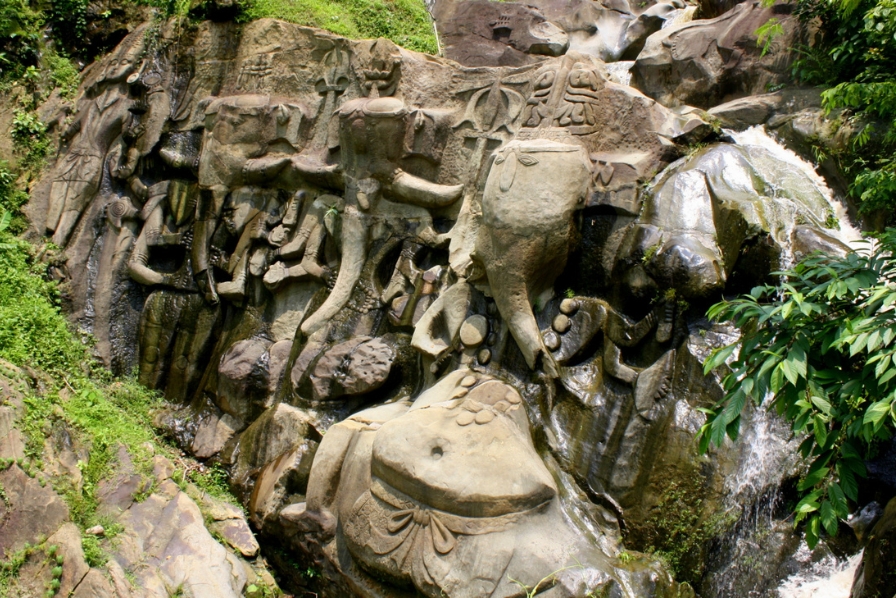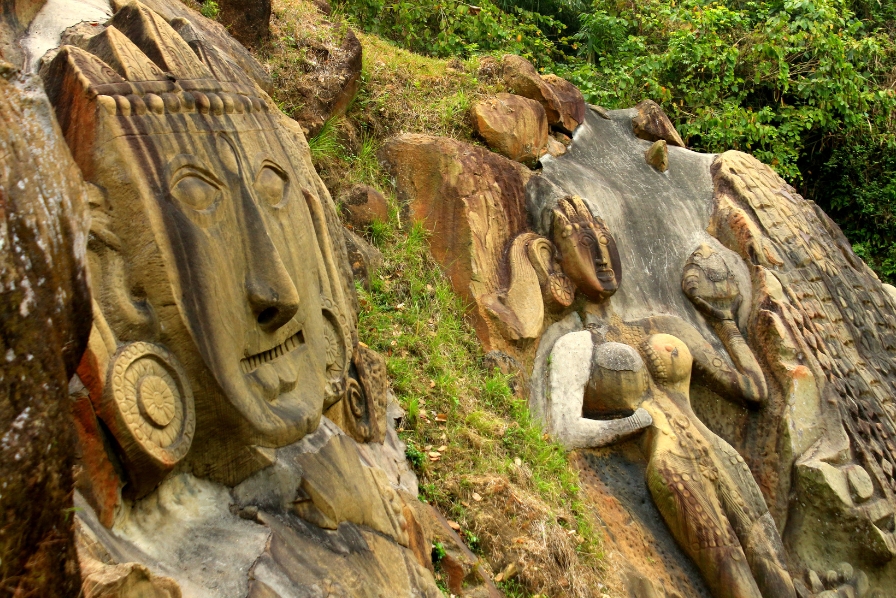Unakoti stands for ‘una’, which means one less, and ‘koti’ which means crore. So Unakoti translates to ‘one less than a crore’ – or put another way, 99,99,999. Believably, that’s the number of rock-cut carvings available here. Legend has it that one crore gods and goddesses, on their way to Kashi, halted here for the night. Lord Shiva instructed everyone to wake up before sunrise so that they could continue their journey. However, no one except Shiva managed to wake up, and in a fit of rage, he cursed the others to turn into stone.
The images found at Unakoti are of two types – rock-carved figures and stone images. The Shiva head, known as Unakotiswara Kal Bhairava, is central to the landscape and approximately 30 feet high. It has a third eye on its forehead and a 10 feet high ornamental headgear and majestic kundals adorning its ears.
On its right is a sculpture of the goddess Durga. A trident has also been carved on the same rock face. There’s another rock-cut image of Shiva as well, called Gangadhara. The sculptural relief art also includes miniature tortoises, lingas, and so on.
The landscape is dotted with other figures, including Ganesha, the elephant-headed deity, Kamdhenu, the bovine goddess, Nandi, the mount of God Shiva, Shivalinga, and other rock-cut male and female figures. There are also three elephant-headed deities on a single rock face.
Another legend has it that all these stone sculptures were carved by an artisan named Kallu Kumhar to honour the wish of Goddess Parvati. With only one night given to complete the task, Kumhar managed to sculpt all except one. Thus, the number 99,99,999!
Unakoti is locally called Subrai Khung by Tripura’s indigenous Kokborok tribes. Several preservation initiatives by Archaeological Survey of India (ASI) are currently underway and the site is listed by UNESCO for World Heritage status.
170 km from the state capital Agartala, Unakoti is set amidst hills, forests, and streams. It makes for a leisurely trek and was recently designated as a Biodiversity Heritage Site, sprawling out over 40 hectares.
Also watch: Nartiang Monoliths: Echoes of the past in Meghalaya
The lead image on top shows Unakotiswara Kal Bhairava at Unakoti in Tripura.
All pics are sourced from Wikimedia Commons














